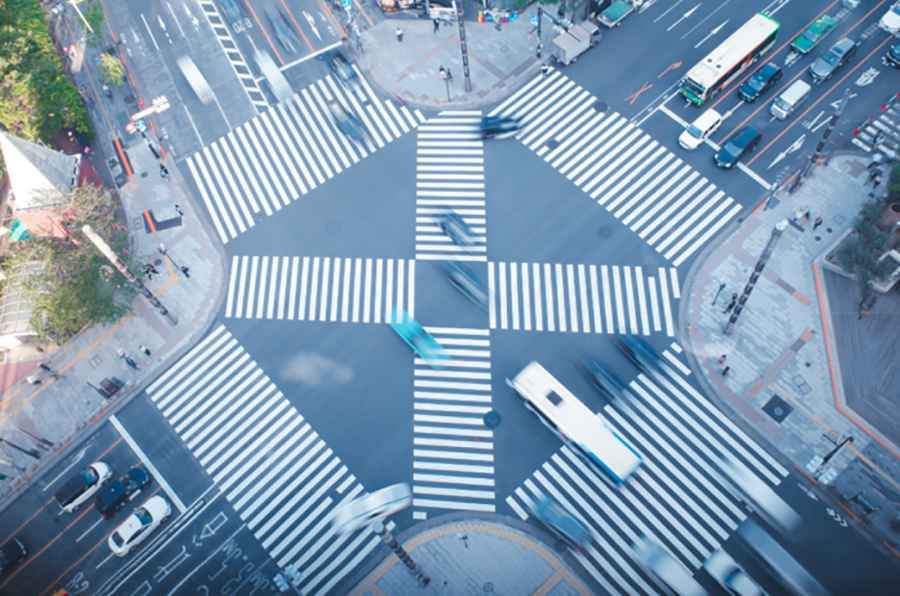Who's Responsible for an Intersection Crash? Different Scenarios and Legal Options
Negotiating intersections is one of the most challenging aspects of driving; unfortunately, many accidents happen there as well. Dealing with traffic signals, road conditions, driver behavior, and determining faults in intersection crashes can be challenging. Anyone involved in such an incident has legal obligations and potential penalties that they need to understand. This article explores possible intersection collision scenarios and the relevant legal options for affected parties.

There are numerous reasons why intersection crashes happen. The most common causes are speeding, distracted driving, running red lights, and failing to yield the right of way. Environmental elements like bad weather or blocked views could also cause these mishaps. Understanding these factors helps identify potential culprits and legal actions.
Common Intersection Crash Situations and Fault Determination
T-Bone Collisions
- Scenario: One car runs a red light and hits another crossing the intersection.
- Responsible Party: Typically, the red-light-running driver is at fault. Traffic camera footage, witness statements, and vehicle placement can all provide evidence.
Rear-End Collisions
- Scenario: A car stops abruptly at an intersection, and the automobile behind it fails to stop in time.
- Responsible Party: Usually, the rear automobile driver is at fault for either not paying attention or following too closely. Exceptions may arise if the front automobile suddenly stops without reason or due to defective brake lights.
Left-Turn Collisions
- Scenario: At an intersection, an incoming car collides with a car turning left.
- Responsible Party: Usually, the turning driver is at fault for not allowing approaching vehicles to pass. If the approaching car was running a red light or speeding, though, they might bear some responsibility.
Multi-Vehicle Pileups
- Scenario: An initial collision at an intersection causes a chain reaction involving several automobiles.
- Responsible Party: Determining culpability in pileups can prove difficult. Several parties could be responsible; hence, careful analysis is required to evaluate the behavior of every motorist involved.
Legal Options for Affected Individuals
Those involved in an intersection crash have these legal options:
1. File an Insurance Claim
You should notify your insurance company right away following a crash. Send any required paperwork, including police reports, witness statements, and pictures of the accident scene. Your state's insurance rules will determine whether you file a claim with your insurer (no fault) or the at-fault driver's insurer. It’s crucial to understand your coverage and legal alternatives before you file the claim.
2. Seek Legal Counsel
It is advisable to seek legal assistance when dealing with major injuries, disputing fault, or encountering issues with insurance claims. If needed, an attorney can represent you in court, negotiate with insurance firms, and assist in negotiating difficult legal processes.
3. File a Lawsuit
If insurance payouts are inadequate or denied, you may want to consider personally suing the driver at-fault for compensation. The lawsuit requires compiling proof of negligence, evidence gathering, and damage assessment. Typically, in these situations, legal representation is essential.
4. Consider Settlement Alternatives
Many times, those involved in an intersection crash will settle before appearing in court. This process consists of negotiations between the driver at-fault, the injured party, and their respective insurance companies or legal counsel. A faster conclusion, fewer legal bills, and saved time are some benefits of settling out of court.
Preventative Measures
To avoid dealing with an intersection crash and the legal issues that follow, here are some preventative measures:
- By paying attention, obeying traffic signals, and avoiding distractions, one can significantly reduce intersection collisions.
- Modern cars with better visibility, automatic braking, and collision avoidance systems can help to avert mishaps.
- Better traffic signals, road markings, and more aggressive traffic law enforcement help local authorities increase intersection safety.
Understanding the different scenarios of intersection collisions and the legal choices available will enable drivers to negotiate these difficult situations more adeptly. Knowing the causes, determining fault, and exploring legal options help you better protect yourself and pursue justice following an intersection crash.